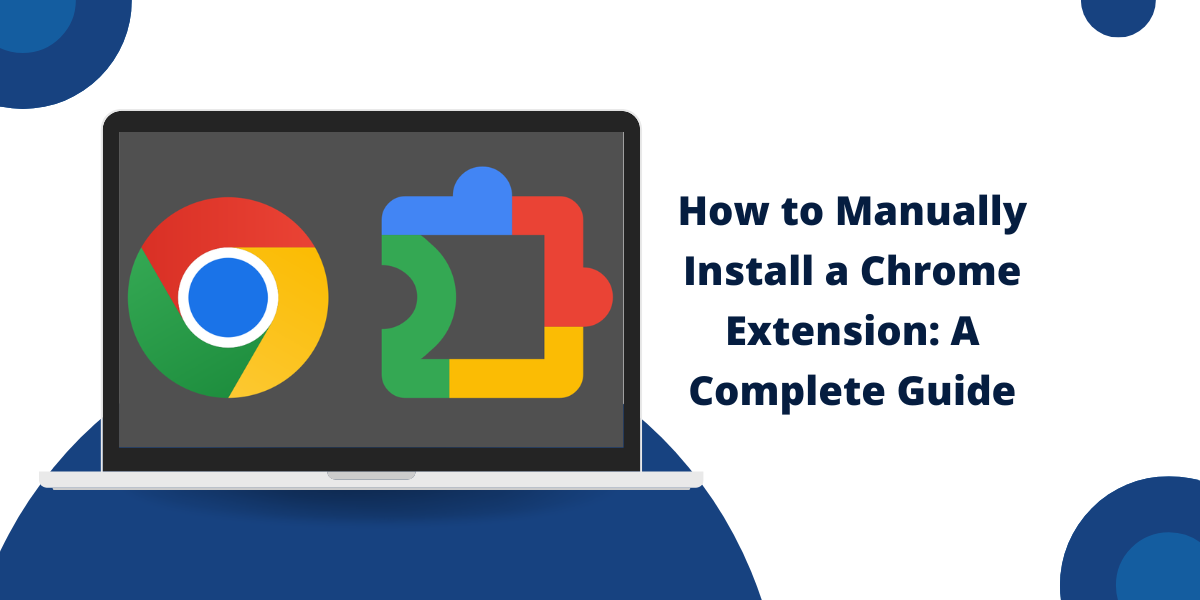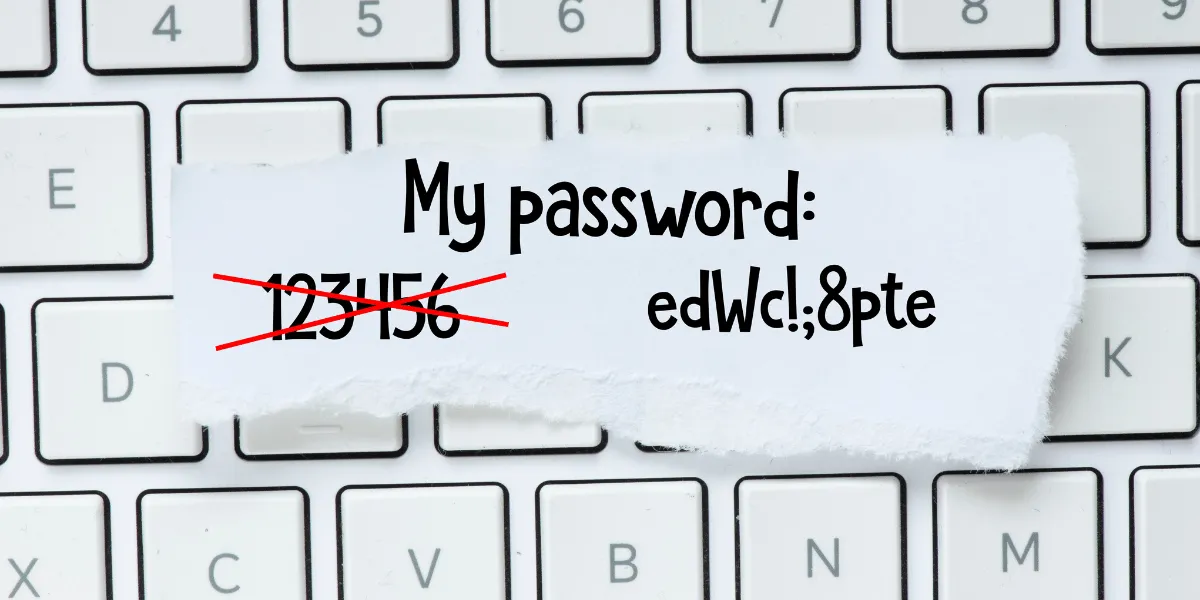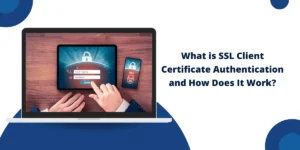You can manually install chrome extension files through two methods: enabling developer mode to load unpacked extensions or installing CRX files directly. Both methods bypass the Chrome Web Store when you need to install chrome extension from zip file or test custom extensions locally.
Why You Need to Manually Install Chrome Extensions (5 Key Reasons)
Manual extension installation is necessary when:
- Testing custom or development extensions
- Installing blocked extensions in restricted environments
- Adding extensions not available on Chrome Web Store
- Installing older versions of extensions
- Working with private or enterprise extensions
Method 1: How to Install Extension from ZIP Files Using Developer Mode
This method shows you how to enable developer mode extensions in chrome and load unpacked extensions.
Step 1: Enable Chrome Developer Mode
- Open Chrome and navigate to chrome://extensions/
- Toggle “Developer mode” switch in the top-right corner
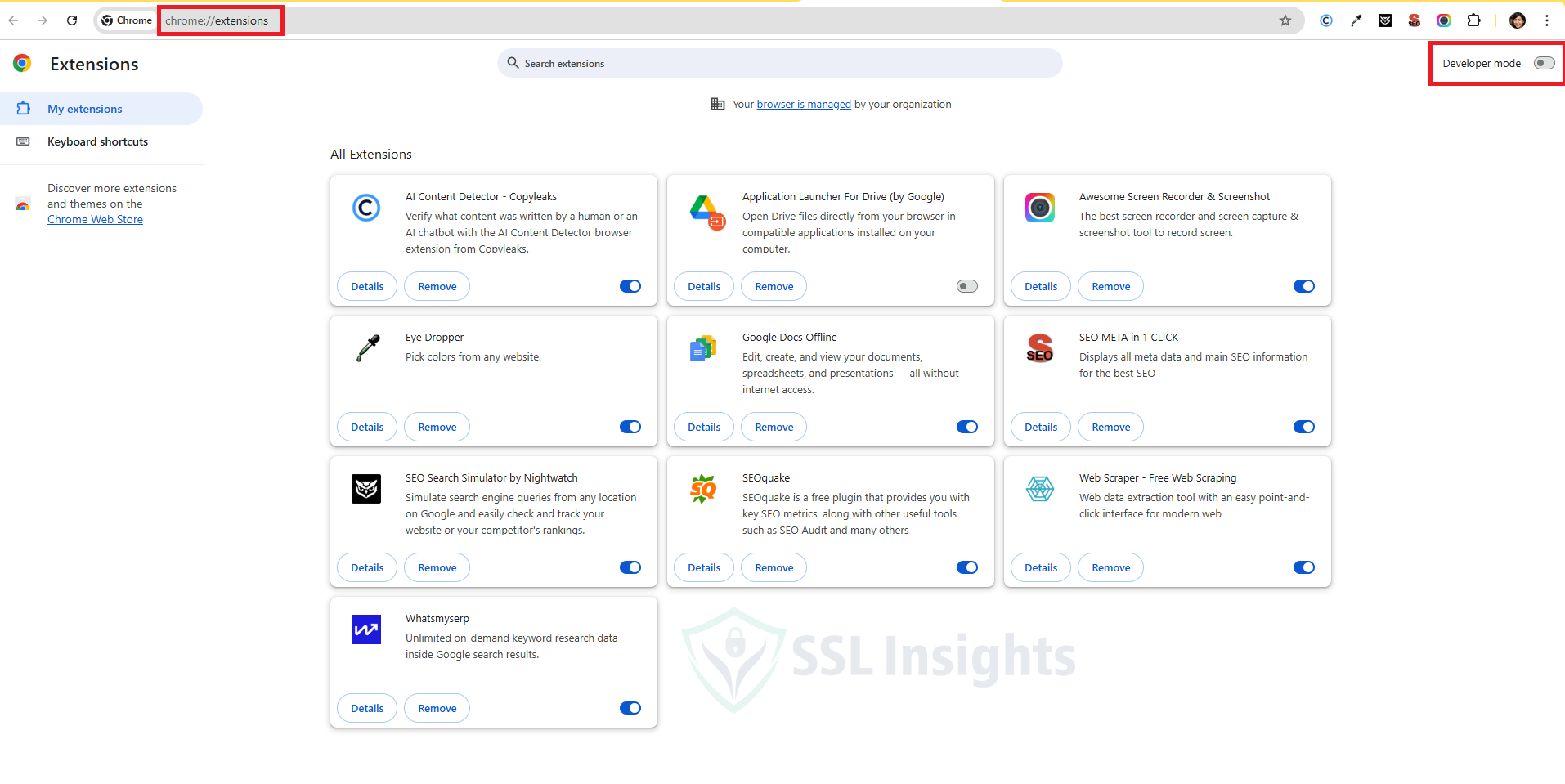
- New buttons will appear: “Load unpacked,” “Pack extension,” “Update“
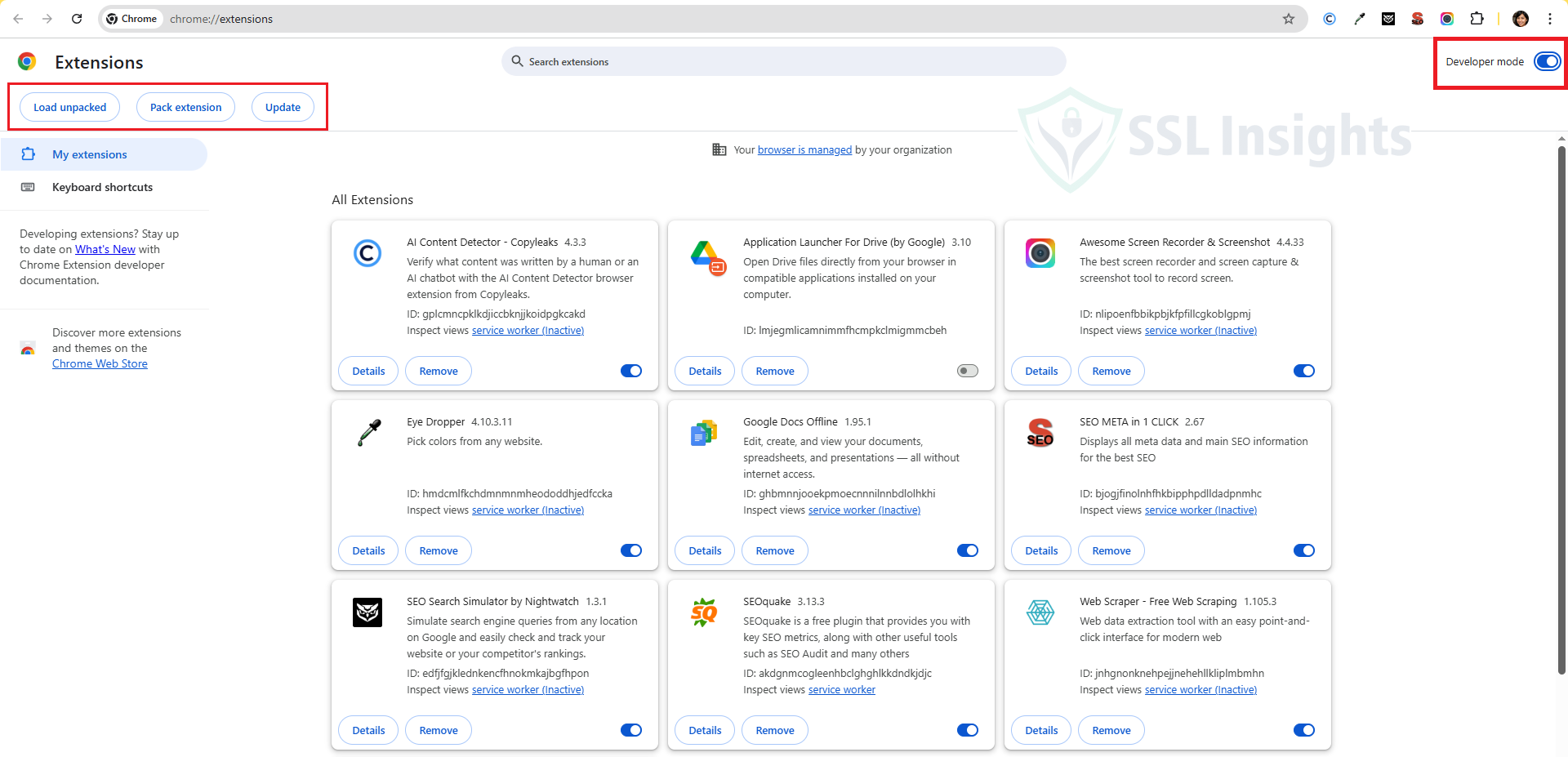
Step 2: Prepare Your Extension Files
For ZIP files:
- Extract the ZIP file to a folder on your computer
- Ensure the folder contains manifest.json file
- Keep all extension files in the same directory
For existing folders:
- Verify the folder contains all extension files
- Check that manifest.json is present in the root directory
Step 3: Load the Unpacked Extension
- Click “Load unpacked” button
- Navigate to your extension folder
- Select the folder containing manifest.json
- Click “Select Folder”
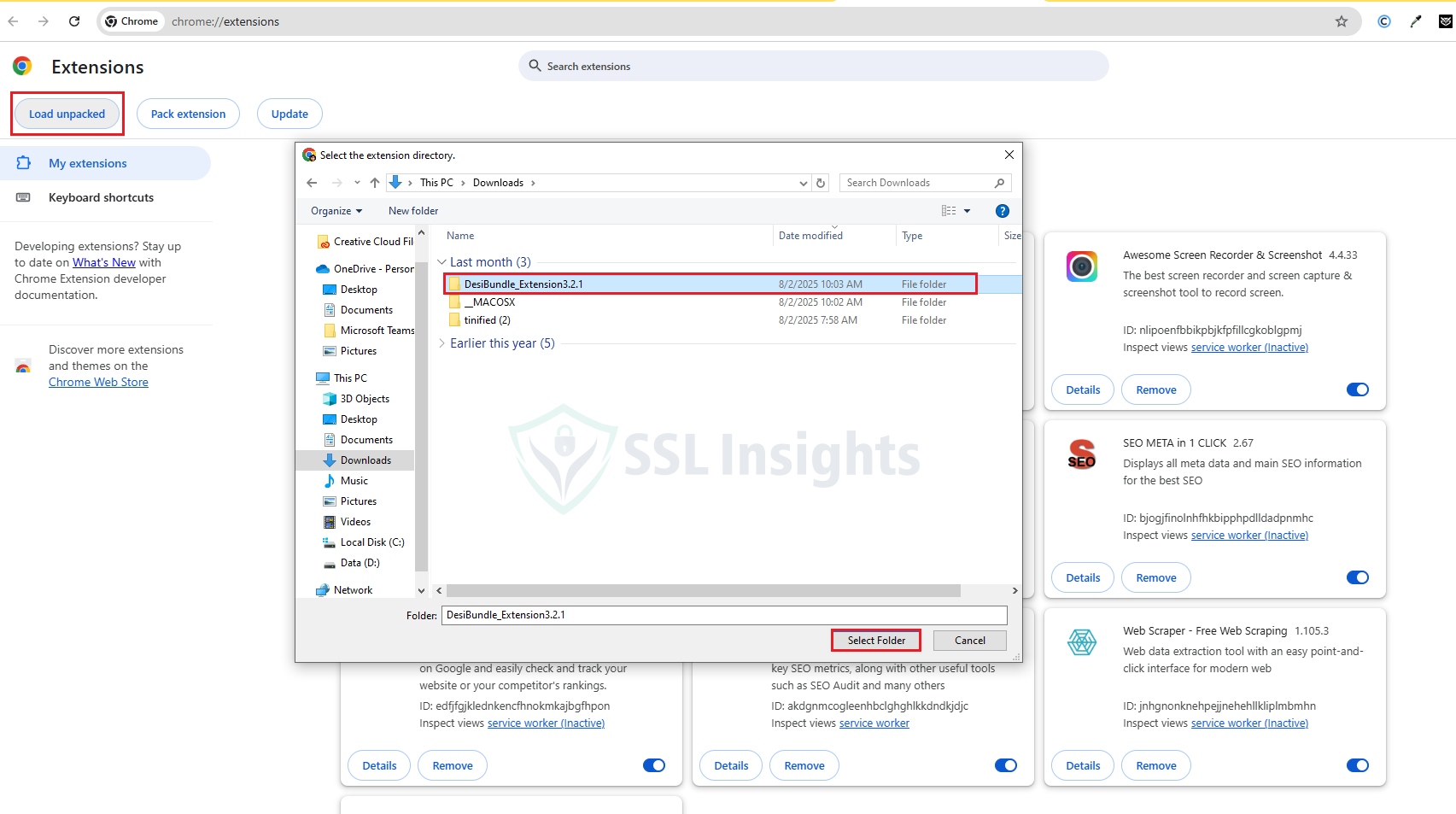
- Your extension will appear in the extensions list
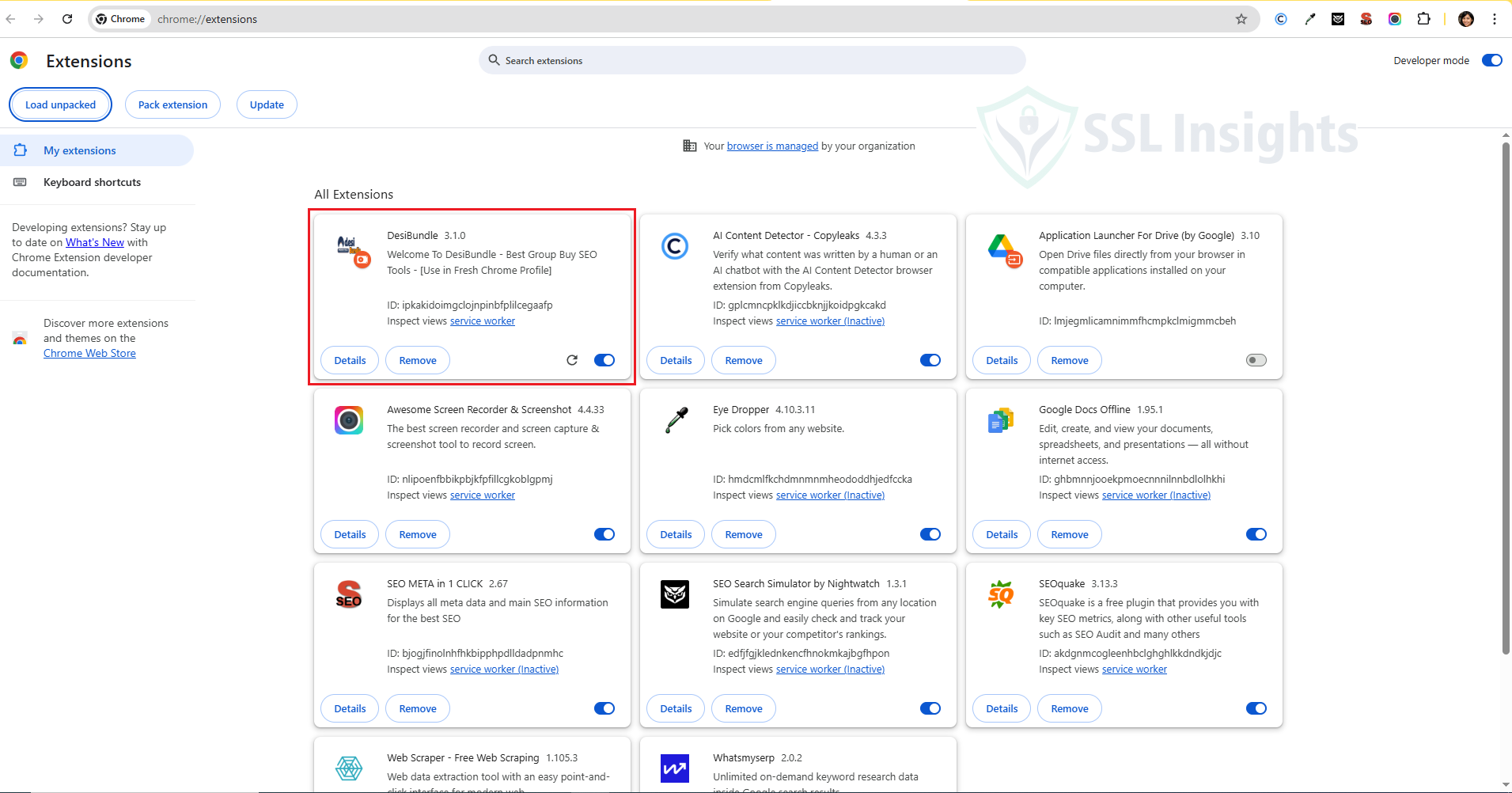
Troubleshooting Load Unpacked Method
| Issue | Solution |
| Load unpacked extension not working | Ensure manifest.json is in the selected folder |
| Extension not appearing | Check for syntax errors in manifest.json |
| Permission errors | Run Chrome as administrator |
| Files not loading | Verify all referenced files exist in the folder |
Method 2: How to Install CRX Files Directly in Chrome
This method demonstrates how to install crx file in chrome without developer mode.
Step 1: Download the CRX File
- Obtain the .crx file from a trusted source
- Save it to an easily accessible location
- Note: Chrome blocks direct CRX installation for security
Step 2: Install CRX Using Developer Mode
- Go to chrome://extensions/
- Enable Developer mode (toggle switch)
- Drag and drop the .crx file onto the extensions page
- Click “Add extension” when prompted
What are the Alternative CRX Installation Methods
Method A: Rename and Extract
- Change file extension from .crx to .zip
- Extract the ZIP file
- Follow Method 1 steps to load unpacked extension
Method B: Command Line Installation
chrome.exe --load-extension="C:\\path\\to\\extension\\folder"
Where to Find Chrome Extension Files on Your Computer
Understanding chrome extension file location helps with manual installation:
| Operating System | Extension Directory |
| Windows | %LOCALAPPDATA%\\Google\\Chrome\\User Data\\Default\\Extensions |
| macOS | ~/Library/Application Support/Google/Chrome/Default/Extensions |
| Linux | ~/.config/google-chrome/Default/Extensions |
How to Manage and Activate Manually Installed Extensions
How to Activate and Manage Extensions
- Navigate to chrome://extensions/
- Toggle extensions on/off using the switch
- Click “Details” to configure permissions
- Enable “Allow in incognito” if needed
- Set “Site access” permissions
Extension Installation Statistics
- 73% of Chrome users have at least 5 extensions installed
- 42% of developers use manual installation for testing
- Developer mode is enabled on approximately 15% of Chrome installations
- Manual installation reduces extension approval wait time from 7-14 days to immediate
How to Add Extensions to Chrome Toolbar (Quick Pin Method)
How to add extensions to chrome bar:
- Click the puzzle piece icon (Extensions menu)
- Find your manually installed extension
- Click the pin icon next to the extension name
- The extension will appear in your Chrome toolbar
How to Fix Common Chrome Extension Installation Problems
Extension Not Working After Installation
Checklist for troubleshooting:
- Verify all files are present in extension folder
- Check manifest.json for syntax errors
- Ensure proper permissions are set
- Restart Chrome after installation
- Clear browser cache and cookies
Security Considerations
| Risk Level | Description | Mitigation |
| High | Installing malicious extensions | Only install from trusted sources |
| Medium | Privacy concerns | Review extension permissions carefully |
| Low | Performance impact | Monitor extension resource usage |
Advanced Chrome Extension Installation Techniques
Installing Extensions for All Users
How to install chrome extension for all users:
- Place extension folder in Chrome’s program directory
- Use Group Policy (Windows Enterprise)
- Configure master preferences file
- Deploy via enterprise management tools
Importing Chrome Extensions
Import chrome extensions now between different Chrome installations:
- Export extensions using Chrome sync
- Copy extension folders manually
- Use third-party extension managers
- Backup extension settings and data
When to Use Manual Installation Instead of Chrome Web Store
When manual installation is needed:
- Developer testing environments
- Enterprise restricted networks
- Educational institutions with blocked access
- Custom internal tools
- Beta or experimental extensions
Final Thoughts
Manually install chrome extension files using either developer mode for unpacked extensions or direct CRX installation. Both methods provide flexibility for testing, development, and installing restricted extensions. Remember to only install extensions from trusted sources and regularly review permissions for security.
Frequently Asked Questions About Manual Extension Installation
How do I manually add a Chrome extension download?
Users can download the .crx extension file from a trusted source. Open Chrome settings, go to Extensions, and enable Developer Mode. Drag and drop the .crx file into the Extensions page to complete the installation.
Can I install Chrome extensions without using the Web Store?
Chrome users can install extensions from outside the Web Store. The process requires enabling Developer Mode and loading an unpacked extension folder or using a direct .crx file installation.
How do I force install a Chrome extension?
Users must first download the extension files to their computer. Open Chrome’s Extension page through Menu > More Tools > Extensions. Turn on Developer Mode and click “Load Unpacked” to select the extension folder.
Why won’t Chrome let me install extensions manually?
Chrome blocks manual extension installations for security reasons. Users need to enable Developer Mode first. Some extensions require downloading from the official Chrome Web Store to ensure safety.
How do I install a disabled Chrome extension?
Open Chrome’s Extensions page from the menu. Find the disabled extension and click the toggle switch to enable it. If missing, reinstall the extension from its original source.
Where are Chrome extensions stored on my computer?
Chrome extensions store files in specific system folders. Windows users find them in AppData/Local/Google/Chrome/User Data/Default/Extensions. Mac users locate them in ~/Library/Application Support/Google/Chrome/Default/Extensions.

Priya Mervana
 Verified Web Security Experts
Verified Web Security Experts
Priya Mervana is working at SSLInsights.com as a web security expert with over 10 years of experience writing about encryption, SSL certificates, and online privacy. She aims to make complex security topics easily understandable for everyday internet users.
